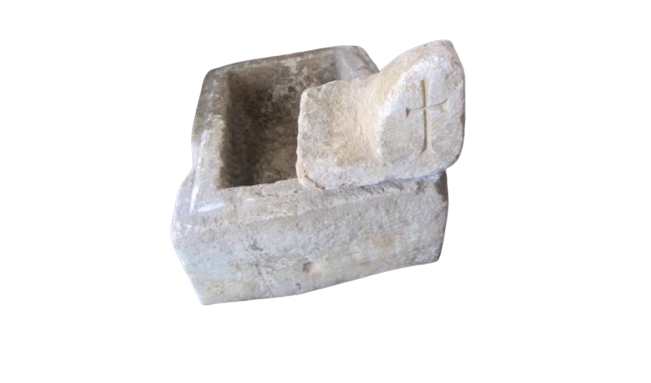Who seeks will find, and the door will open to those who knocks . "Jesus Christ"
The claim that the piece of the cross found in Victor Sinop belonged to the cross on which Jesus Christ was crucified has received a great deal of attention in the Western press. So how did this cross piece come to Sinop? The answer is in a legend from the year 325...
According to the Christian belief, in the archaeological excavations carried out near the 7th century Balatlar Church in Sinop, a stone chest was found. Relics thought to be part of the cross on which Jesus was crucified were found (according to Islamic belief, it was not Jesus who was crucified, but someone else incarnated in his appearance). Following this news, in which the Western press showed great interest, the British Daily Mail newspaper discussed how the cross could have come out in Turkey after the crucifixion in Jerusalem. It was understood that there was a historical legend behind the emergence of the cross from Sinop.
According to this, Helena Augusta, the mother of the first Byzantine King Constantine I, who gave her name to Constantinople, the old name of Istanbul, went to Jerusalem in 325 to gather more information about the crucifixion of Jesus Christ and to find the cross. Helena, who had the temple of Venus demolished near the tomb of Jesus Christ in Jerusalem, started excavations to find three crosses.
Sick woman recovered (Rumor)
To find out which of the three crosses was the Holy Cross, the Empress had a woman brought in on her deathbed. When the sick woman touched the real cross from the crosses, she suddenly recovered and that cross was declared the Holy Cross. Some of the large parts of the Holy Cross and other relics found were left in Jerusalem, while other parts were sent to Christian religious leaders in Rome and Istanbul. The legend of Helena finding the Holy Cross was first written down in the late 4th century.
Theory: Saint Paul's fans made it up
Historians made the following assessment about the cross found in Sinop: “Sinop was the central region of Anatolian Christianity in the first period as a city. From the 1st century onwards, a different and correct interpretation of Christianity was made here, and churches were established accordingly. It is a fabrication by the supporters of St. Paul that the piece of the cross found was found in Palestine by Constantine's mother. These finds are invaluable to Snop but need to be properly evaluated.
Who seeks will find, and the door will open to those who knocks . "Jesus Christ"
The claim that the piece of the cross found in Victor Sinop belonged to the cross on which Jesus Christ was crucified has received a great deal of attention in the Western press. So how did this cross piece come to Sinop? The answer is in a legend from the year 325...
According to the Christian belief, in the archaeological excavations carried out near the 7th century Balatlar Church in Sinop, a stone chest was found. Relics thought to be part of the cross on which Jesus was crucified were found (according to Islamic belief, it was not Jesus who was crucified, but someone else incarnated in his appearance). Following this news, in which the Western press showed great interest, the British Daily Mail newspaper discussed how the cross could have come out in Turkey after the crucifixion in Jerusalem. It was understood that there was a historical legend behind the emergence of the cross from Sinop.
According to this, Helena Augusta, the mother of the first Byzantine King Constantine I, who gave her name to Constantinople, the old name of Istanbul, went to Jerusalem in 325 to gather more information about the crucifixion of Jesus Christ and to find the cross. Helena, who had the temple of Venus demolished near the tomb of Jesus Christ in Jerusalem, started excavations to find three crosses.
Sick woman recovered (Rumor)
To find out which of the three crosses was the Holy Cross, the Empress had a woman brought in on her deathbed. When the sick woman touched the real cross from the crosses, she suddenly recovered and that cross was declared the Holy Cross. Some of the large parts of the Holy Cross and other relics found were left in Jerusalem, while other parts were sent to Christian religious leaders in Rome and Istanbul. The legend of Helena finding the Holy Cross was first written down in the late 4th century.
Theory: Saint Paul's fans made it up
Historians made the following assessment about the cross found in Sinop: “Sinop was the central region of Anatolian Christianity in the first period as a city. From the 1st century onwards, a different and correct interpretation of Christianity was made here, and churches were established accordingly. It is a fabrication by the supporters of St. Paul that the piece of the cross found was found in Palestine by Constantine's mother. These finds are invaluable to Snop but need to be properly evaluated.
ETH: xxxxxxxxxxxxxxxxxxxxxxxxx

